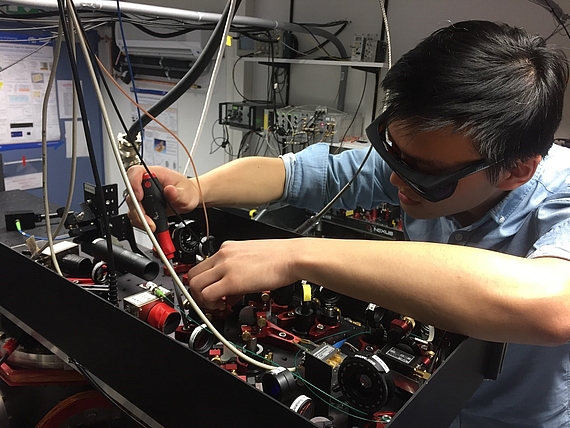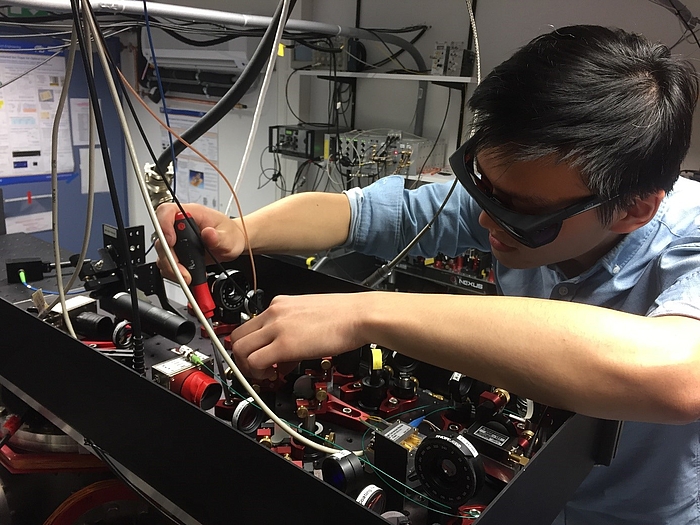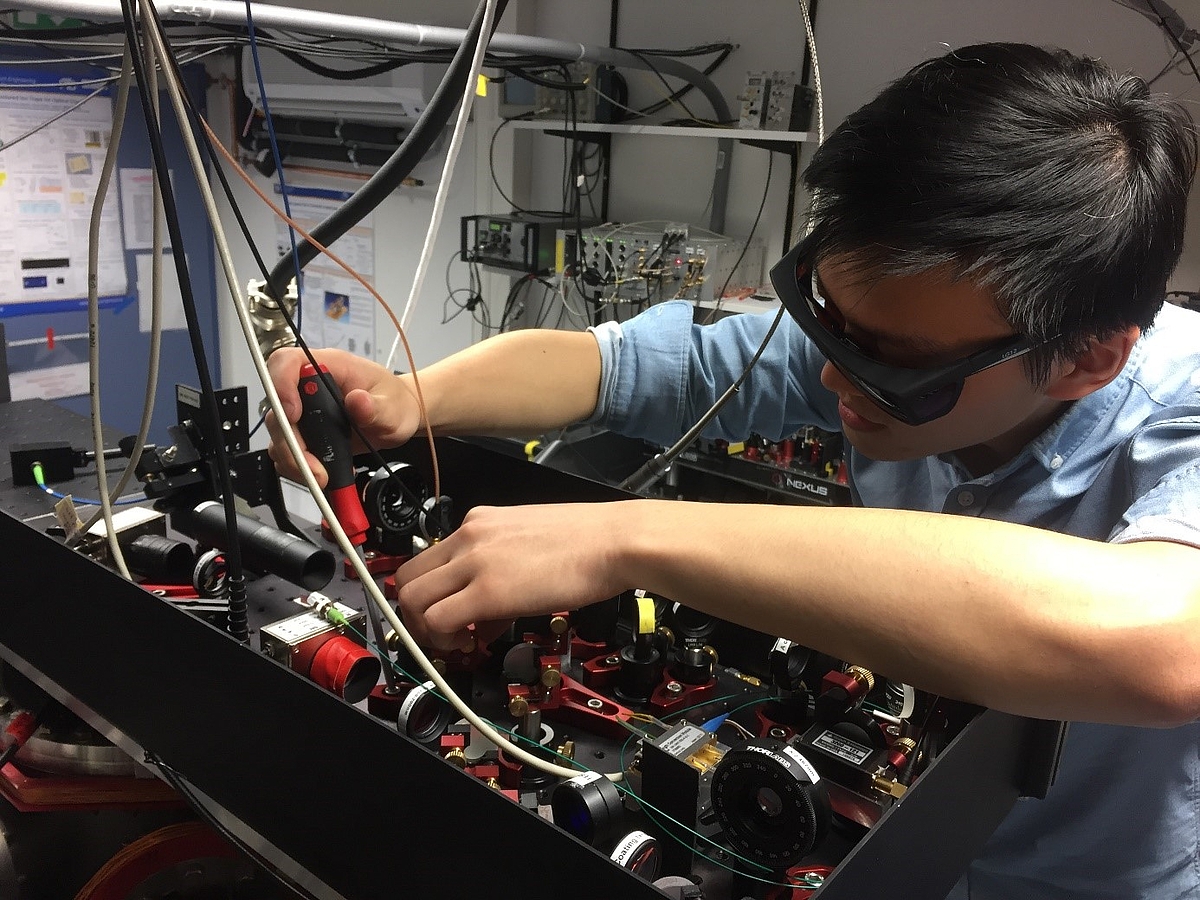


Introduction
As the systematic error budgets of ion-based frequency standards continue to improve, ever-longer measurement times are required to average over the statistical noise and obtain a measurement uncertainty that reflects the achievable accuracy. Shorter averaging times can be achieved either by reducing laser phase noise, which currently limits the spectroscopic probe time and hence the observed linewidth of many investigated atomic resonances, or by increasing the number of ions to overcome the fundamental limit on the signal-to-noise ratio of measurements on a single quantum system.
Within this project we pursue three different approaches in three different setups: linear ion chains in a precision trap will enable high-accuracy In+ and Yb+ multi-ion clocks, multiple ensembles of Yb+ ions in spatially separate trap zones will enable dead-time free clock readout, while we will achieve long probe times for a Al+/Ca+ quantum logic clock through pre-stabilisation of the clock laser light using an ensemble of Ca+ ions, realising a multi-ensemble clock. The investigated systems are therefore complementary in their goals, but synergetic in the employed quantum engineering techniques. The project contributes to all of DQ-mat’s core objectives, namely scaling quantum systems, manipulating and characterising quantum systems, composing quantum systems, enhancing quantum sensors and metrology, testing fundamental physics and exploring many-body physics.
Results
During the first two funding periods, we have investigated optimal probe times for a given number of atoms and laser noise, developed novel efficient cooling schemes for dual species clocks based on electromagnetically-induced transparency to reduce time-dilation shifts and evaluated systematic shifts of the Al+ system to 1 ×10−18. We operated an optical reference using dynamical decoupling to mitigate systematic shifts of up to five ions in a crystals, and operated an optical clock based on two Ca+ ions entangled in a decoherence-free sub space
Time dilation shifts due to thermal motion and micromotion are among the major challenges in controlling the dynamics of large ensembles of ions for precision spectroscopy. We therefore investigated micromotion across an ion chain, heating of the motional modes in extended 1D to 3D ion crystals and demonstrated the experimental capability of sorting mixed-species chains for reliable sympathetic cooling conditions. With this the potential of multi-ion clock operation with fractional systematic uncertainties as low as 10-19 was successfully demonstrated. In succeeding three-cornered-hat clock comparisons a first In+/ Yb+ Coulomb crystal clock with a total systematic uncertainty of 2.5*10−18 for a single clock ion and first observations of reduced statistical uncertainties in measurements with up to four clock ions were demonstrated.
We have also started frequency comparisons of the Al+/Ca+ clock, the multi-ion Ca+ and entangled Ca+ reference, as well as the In+ multi-ion clock with the Yb+ single ion clocks and the Sr lattice clock in project B02 (optical clocks).
Publications
Showing results 21 - 24 out of 24
Project leader
30167 Hannover
30167 Hannover
30167 Hannover
Staff
38116 Braunschweig

